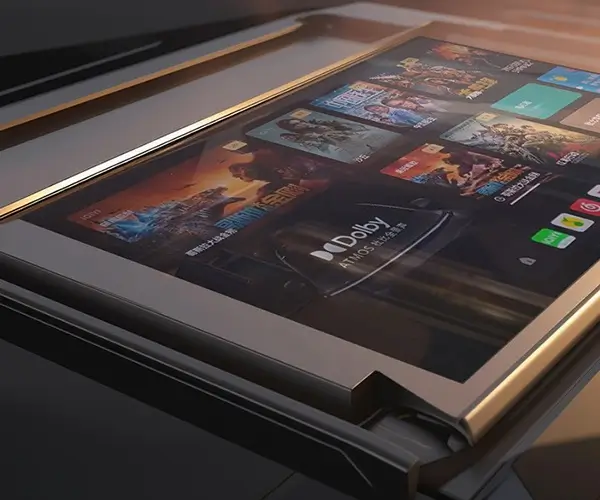part 1:
Unraveling the Myth: Is a Gearbox a Motor?
If you’ve ever found yourself staring at the intricate machinery of a car or a manufacturing robot, you might have wondered about the roles these complex parts play. A common question that pops up in conversations about mechanical systems is: "Is a gearbox a motor?" At first glance, these components seem intimately linked—often working side by side, sharing the spotlight in the grand performance of machinery. But beneath this apparent partnership lies a fundamental difference that’s worth exploring.

Understanding the Basics: What is a Motor?
To start untangling this question, we need clear definitions. A motor is fundamentally a device that converts energy—be it electrical, chemical, or mechanical—into rotational motion. When you think of electric motors powering household appliances, electric vehicles, or industrial equipment, what’s happening is a conversion process: electrical energy flows in, and the motor outputs rotational mechanical energy that drives a shaft or other components.
Motors can be of various types—AC motors, DC motors, brushless motors, synchronous or asynchronous—each designed to fit specific applications. What unites them all is their role as a source of mechanical power.
In essence, a motor supplies the initial force needed to move or accelerate a component. It’s often regarded as the 'heart' of the mechanical system, generating the momentum or torque that’s necessary to do work.
What is a Gearbox?
Now, how about a gearbox? A gearbox, also known as a transmission or gear assembly, is a mechanical device designed to modify the torque and speed delivered from a power source, typically the motor. Think of it as a sophisticated set of gears—intermeshing wheels that change the characteristics of movement to suit the needs of the application.
Gearboxes serve multiple purposes: they can step up or step down torque, alter rotational speed, and even modify the direction of rotation. They are integral to countless devices, from the automobiles we drive daily to industrial machinery and even bicycles.
The Mechanical Relationship
When examining machinery that involves both a motor and a gearbox, the motor acts as the driver, sending rotational energy into the gearbox. The gearbox then modifies this energy—reducing or increasing torque, adjusting speed, and delivering it to the final component or system.
In a typical car, for instance, the electric motor (or internal combustion engine) produces power, which then passes through the gearbox to the drive shaft and ultimately the wheels. The gearbox here functions as a translator, ensuring the right amount of torque and speed reach the wheels, depending on driving conditions.
So, is a gearbox a motor?
Based on the definitions and roles we’ve discussed, the answer becomes clearer. A gearbox is not a motor. It does not generate energy or convert one form of energy into rotational movement. Instead, it manipulates and directs the energy supplied by the motor. Think of the motor as the engine that produces the energy, and the gearbox as the transmission that directs and adjusts that energy for optimal use.
The difference in purpose is significant.
A motor generates the mechanical power. A gearbox modifies, controls, and transmits that power.
This distinction is fundamental in understanding machinery, and mixing the two terms can lead to misconceptions, especially in engineering, automotive design, and manufacturing contexts.
The Interdependence of Motor and Gearbox
Despite their differences, motors and gearboxes are inseparable in many mechanical systems—they form a perfect partnership. The motor provides the necessary energy, while the gearbox ensures the energy is delivered at the right intensity and speed for the task at hand.
Consider a wind turbine. The blades turn the rotor, which is connected to a gearbox. The gearbox steps up the rotational speed to generate electricity efficiently. The turbines themselves have no electrical energy generation capability—they rely on the rotor’s movement (driven by the wind) and the gearbox to optimize power production.
In this scenario, the gearbox can be viewed as a crucial intermediary, but not a source of energy itself. It’s a facilitator, a necessary piece of the puzzle, rather than the generator.
Real-world Misconceptions
One reason this confusion persists is how we often describe these components colloquially. People might say "the motor's gearbox" or "gearbox motor," blurring the line between the energy source and the transmission system. This colloquial language isn’t technically accurate but reflects a common understanding that both parts are part of the same energy flow.
Another misconception is thinking that gearboxes can operate independently or generate power of their own. They cannot. They require an external power source—the motor—to function.
Why does this distinction matter?
In engineering and maintenance, understanding the difference affects troubleshooting, design, and safety. If a gearbox isn’t working correctly, you’re probably dealing with an issue in the transmission system or its lubrication—not in the energy source. Conversely, a motor fault is a different matter altogether.
Understanding that gearboxes are not motors helps clarify the design of systems and ensures better communication among engineers, technicians, and enthusiasts alike.
Stay tuned for Part 2, where we’ll explore the practical applications, technological innovations, and why differentiating between a motor and a gearbox piques curiosity in engineering minds around the world.
Leveraging innovations in modular drive technology, Kpower integrates high-performance motors, precision reducers, and multi-protocol control systems to provide efficient and customized smart drive system solutions.




































